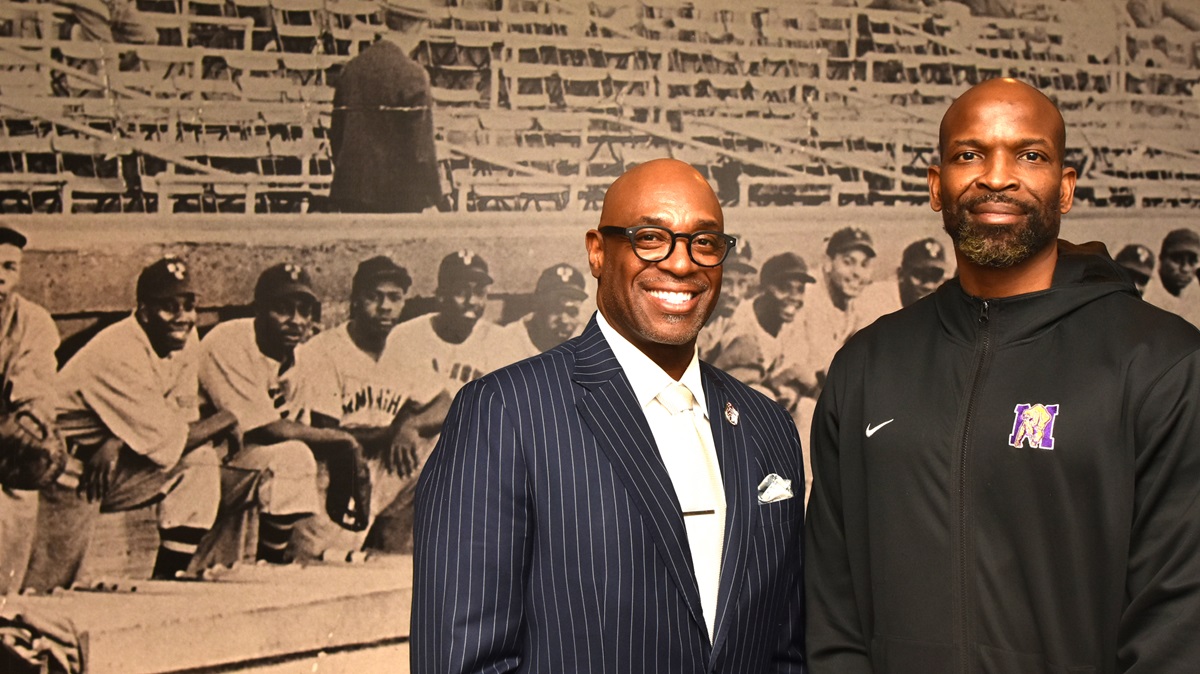A tale of two Alabama cities and their famous plays

Actors perform a courtroom scene from the play adaptation of Harper Lee's "To Kill a Mockingbird" in the Old Monroe County Courthouse, now a museum. The fictional town in Lee's story was modeled on Monroeville, where she grew up and her father, a lawyer, argued cases in the old courthouse. "To Kill a Mockingbird" is one of two famous Alabama-set plays performed each year in "authentic" settings, the other being "The Miracle Worker," performed at Helen Keller's childhood home, Ivy Green. (contributed)
What are the odds that two of America’s most beloved plays originated and are performed in the same state? Of course, we speak of Alabama’s theatrical duo of distinction, “The Miracle Worker” and “To Kill a Mockingbird.” Together, they are Tuscumbia‘s and Monroeville’s tale of two cities.
Each play features a strong female child leading role – Helen Keller and Jean Louise “Scout” Finch. Both shows are performed – at least partly – outdoors, on sites where the story occurs. And each play evokes goosebumps.
Let’s look behind the curtain at Alabama’s plays of world renown.

The scene most closely associated with “The Miracle Worker,” with Jaidyn Quillen as Annie Sullivan and Lillie Meyer as Helen Keller. (Mary Carton)
‘The Miracle Worker’
Tuscumbia’s deaf-blind girl who sees with her heart is the epitome of triumph over tragedy.
“The history of Helen Keller and Annie Sullivan is one of amazement,” says Jonathan Moore, who plays Helen’s father, Capt. Arthur Keller. “It is indeed a miracle. Before Helen Keller, people either lived with being deaf and blind or they were committed to an asylum. Annie gave Helen’s life a meaning and purpose.”
Darren Butler, who directed Tuscumbia’s play for about two decades, agrees. “This is more than a play,” the Orange Beach resident says. “For many, it is a pilgrimage. Helen and Annie redefined how we treat those with special needs.”
Preseason auditions are held annually to select the cast. Adult actors often reclaim their roles, but child actors, especially those portraying Helen, are good for about two years because they grow up.
“The amount of rehearsals depends on how many new people we have,” says director Caroline Self. “Much emphasis is placed on the actress who plays Helen. I played her and understand how hard that role can be. We are asking a child to take on huge responsibilities. She is working with adult actors in live theater.”
Butler agrees. “We are looking for a girl who can keep her eyes still. We have to trick the audience into believing she cannot see or hear. Helen has no lines except ‘wa-wa.’ But inside her mind she is running internal dialogue.
“We want a girl who can tell the story through facial expressions and body actions.”
Not every child can play the key role, but Lillie Meyer can. “It is an honor to portray Helen Keller,” says the 12-year-old actress.

Ivy Green, the house where Helen Keller grew up in Tuscumbia and where performances of “The Miracle Worker” are staged every year. (The George F. Landegger Collection of Alabama Photographs in Carol M. Highsmith’s America, Library of Congress, Prints and Photographs Division)
Performed on the lawn of the Kellers’ home, Ivy Green, Helen discovers “wa-wa” as water trickles over her fingers from a world-famous pump. The prop is literally 100 yards from the real one. In the iconic scene, water not only drips from the pump; it tears in audiences’ eyes.
Lillie makes it look easy. It is not. She notes, “In rehearsals and research, I discovered how to portray the movements and facial expressions of a blind and deaf person.”
“One of the hard parts is learning how to be slapped,” she says, referencing the “fight scene” between Helen and Annie Sullivan. “Knowing you are about to be slapped but not flinching takes practice, but it’s vital.” A blind person about to be slapped would not flinch and, therefore, neither can Lillie.
Every act, mannerism and movement is scrutinized to the last detail. The playwright insisted on it. Caroline Self and Darren Butler had the opportunity to meet the play’s creator, William Gibson, in his Massachusetts home. Gibson considered Ivy Green to be hallowed grounds.
“He told us ‘The Miracle Worker,’ performed at Helen Keller’s home, must be the best here as in any place in the world. For this is where it all happened,” Self recalls. “I never want the cast to forget that. We walk the grounds and tour the house before starting rehearsal to connect the story to what we are telling.”
Jonathan Moore notes, “Helen Keller and Annie Sullivan are more than historical figures. They are heroes. Therefore, we want to create the best product we can.”
For more information, visit helenkellerbirthplace.org.

A photo of the all-amateur cast of “To Kill a Mockingbird,” taken at Monroeville’s Old Courthouse Museum, where the play is performed several times each April. (Kathy McCoy)
‘To Kill a Mockingbird’
By Act Two of “To Kill a Mockingbird,” text messages buzzed throughout Monroeville. “You will never guess who is here,” was a common post, as news spread. Seated in the audience was J.K. Rowling.
The author of the Harry Potter books was in town to enjoy the work of another famous author, Harper Lee. At the show’s end, Rowling vanished before most people knew she was there. But “To Kill a Mockingbird” remains and always will. Once you see it you never forget it.
One does not just “see” Monroeville’s play, one experiences it. “’To Kill a Mockingbird’ is an immersive experience,” says play director Carly Jo Martens, who as a child played main character Jean Louise “Scout” Finch. “I’m not trying to toot our own horn, but Monroeville’s version is like no other.”
Kathy McCoy, the play’s first director, starting in 1991, adds, “It is a little bit magical, especially sitting in the Old Courthouse Museum where the story unfolds.”
The play starts outdoors in an amphitheater setting. In the second half, cast and audience enter the Old Courthouse Museum’s courtroom for the famous trial scene. Jury members are chosen from the audience, and on with the show.
Martens notes the courtroom trial scene is difficult because it is uncomfortable. “Watching the trial, you want to see justice,” she says. “You want to see Mayella Ewell testify, ‘This is not what happened.’ But she never does.”
“To Kill a Mockingbird,” often required reading in middle school, has a dark side. Like the book, the play is a delicate balance of a child’s interaction with adult drama.
“When casting for Scout, I have a conversation with child applicants,” Martens says. “For many children, the only acting experience they have is church plays, which are usually sweet and happy. But ‘To Kill a Mockingbird’ is not sweet. It is bittersweet.”
Martens continues, “Parents must know that Scout has a lot of lines. The actress portraying her needs to read the script daily.” Like “The Miracle Worker,” “To Kill a Mockingbird” depends on the crucial role of a child actress.
McCoy recalls the early days. “At first we were concerned how local people would react,” she notes about the play’s initial performances. “Over the years the show became accepted. The town became an ambassador for the play.”
Monroeville’s performances involve entirely volunteer area actors. “I did not want professionals,” McCoy recalls. “Part of the play’s charm is using amateur – but excellent – actors cast right here in Harper Lee’s hometown.”

Jeff Kirkland in costume as Mr. Cunningham, with his daughter Maegan as Scout, in 2019. Monroeville productions of “To Kill a Mockingbird” are cast entirely using talented locals. Many adults repeat their roles year after year, but the crucial child role of Scout must be recast with a new actress every couple of years. (Jeff Kirkland)
The cast has also taken the show on the road, including Washington, D.C., Chicago, Hong Kong, England and Israel.
“I recall a performance in Jerusalem,” says Monroeville’s Dot Bradley, who plays Calpurnia, the housekeeper. “During the show, a guy in the audience kept wiping his eyes. After the performance, he came up to me, weeping, and said, ‘I’m sorry.’
“I told him, ‘Sir, don’t apologize for what you did not do. This play reminds us to respect yourself and respect others. So stop the tears.’ We hugged and he left.”
In 1962, Birmingham native Mary Badham played Scout in “To Kill a Mockingbird,” the movie. At age 10, with no previous acting experience, she was nominated for an Academy Award as Best Supporting Actress.
But in that same evening, the Oscar went to another child actress, Patty Duke, for her performance as Helen Keller in “The Miracle Worker.”
Years later, both Patty Duke and Mary Badham attended the Alabama plays featuring the characters they had famously played. Thousands continue to do so.
Everyone interviewed for this story agrees, until you have seen these plays in the towns where they happened, you have not truly experienced them.
Yes, the rockets of Huntsville, the seaports of Mobile and the industries of Birmingham draw global recognition. But two small towns, Tuscumbia and Monroeville, put Alabama on the world’s stage.
For more stories and history, read “Monroeville and the Stage Production of ‘To Kill a Mockingbird,'” by John M. Williams.
This story originally appeared in Alabama Living magazine.





